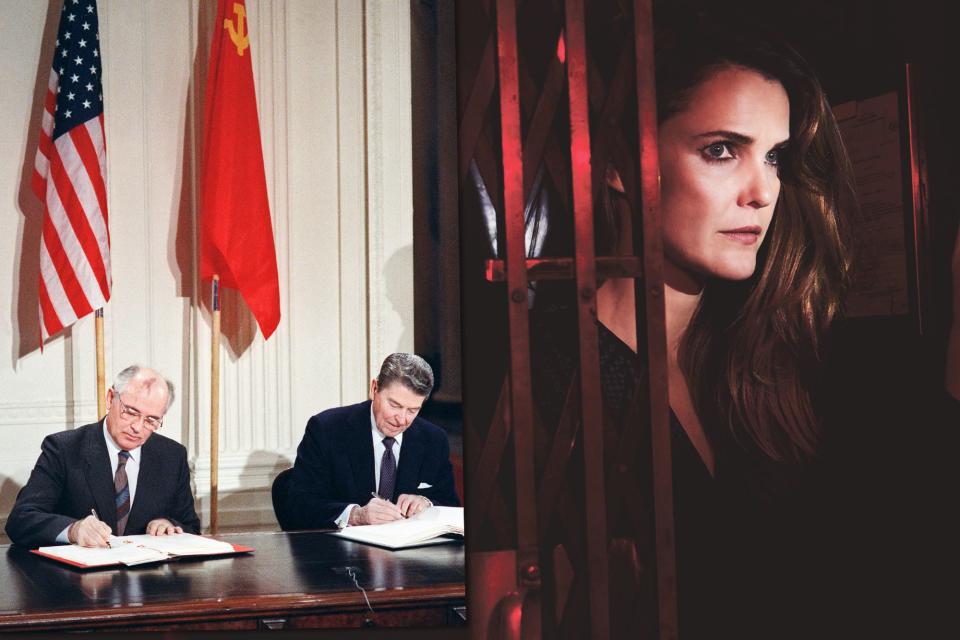The Americans : The Real-Life Russian Saga That Inspired the Final Season
When The Americans returns Wednesday evening for its sixth and final season, the FX spy drama wastes no time in establishing the dramatic real-life backdrop for its last 10 episodes. The season premiere, “Dead Hand,” is set in October 1987, two months before an ominous “summit” that characters keep referencing—the real-life 1987 Washington Summit, where U.S. and Russian leaders Reagan and Gorbachev discussed chemical- and nuclear-weapon control. (If episode titles are any indication, the climactic meeting will take place in the season’s eighth episode, titled, you guessed it, “The Summit.”)
In “Dead Hand,” Elizabeth (Keri Russell) is sent on a covert mission to Mexico City, where she is informed of the real-life Dead Hand, the doomsday machine engineered by Russians to automatically fire its nuclear arsenal if Russian military commanders were wiped out during the Cold War. The computerized system is such a consequential secret that Elizabeth is commanded to keep the intel from husband Philip (Matthew Rhys) and given a suicide pill in the event that she is arrested. But just how frightening was this system?
When an expert on the Russian military reported the existence of the machine in 1993, The New York Times described it as a “chilling” system that “would seem to bring to life one of the darkest fears of the nuclear era—that machines could instigate a nuclear holocaust.” William E. Odom, the former head of the National Security Agency, commented that Dead Hand—if it did really exist—would be “a machine out of control.”
“Everything in our story about the actual summit, the dates, and Dead Hand are historical,” explained Joe Weisberg, the C.I.A.-officer-turned-creator of The Americans who co-wrote Wednesday’s episode, during a phone call with Vanity Fair this week. “We took some liberties with the characters, and some of the details of the espionage. I don’t want to give away too many spoilers, but you’ll see that some of the things we added happen around the super structure of the real summit and the political dynamics that are actually taking place. Dead Hand sounds like something made up for a James Bond movie—but that’s probably true of the Cold War in general. If you look at a lot of the crazy things that happened during the Cold War, the more made up they seem, the more true they are.”
“We like to point out the Martha storyline, where Philip married Martha (Alison Wright), as an example. That seems ridiculous, but the K.G.B. did have its officers marry secretaries in order to get intelligence information. The same is true of Dead Hand—that was actually a system the Russians developed. The final pieces of the system were never actually finalized, but they had a plan for it.”
Weisberg said that he and fellow executive producer Joel Fields knew that they wanted to fast-forward action to set the final season against the 1987 Summit since Season 4.
“Jumping those three years and getting to Gorbachev seemed to give us exactly what we needed both for the historical placement of the final act of the drama, but also what we needed to put Philip and Elizabeth in opposition politically, as this final season heats up.”
If reports from December 1987 are any indication, the Summit will provide a rich, suspense-packed backdrop. About 20 years ago, the Cold War meeting was so anticipated that a half-dozen law-enforcement agencies, including the K.G.B., worked together to create “the most well-secured Washington, D.C., in history,” according to a 1987 Washington Post report. The Washington Post also outlined other unprecedented security precautions taken in the pre-9/11 age: an armored limousine that was flown in for Gorbachev on a secure cargo plane; sewers swept by security teams and covered with manholes; and agents wielding Uzi submachine guns.
“Dead Hand” shows Elizabeth already spread thin with fatigue, worried about her daughter’s induction into espionage, and the loneliness of losing her partner Philip to a normal life. The stakes are ratcheted up when she receives a suicide pill, which is hidden inside a necklace. Weisberg cited the 1977 suicide of C.I.A. officer Aleksandr Ogorodnik as partial inspiration for this story element. Upon being captured by the K.G.B. in Russia, Ogorodnik said he would sign a confession, but only if he could do so with his own pen. The K.G.B. provided Ogorodnik the pen, not realizing that it contained a cyanide capsule. A fellow C.I.A. officer wrote, “Opening the pen as if to begin writing, he bit down on the barrel and expired instantly in front of his K.G.B. interrogators.”
The most promising season-premiere invention, a new artist character named Erica (Miriam Shor), was also the final-season story arc that took Weisberg and Fields the longest to figure out. Elizabeth finds herself spending long hours undercover as a nurse aide in the bedroom of Erica, an artist dying from cancer who happens to be married to a nuclear-arms negotiator. By making Erica an artist, Weisberg and Fields realized that they suddenly had an entirely new storytelling dimension that could help unlock the emotionally guarded Elizabeth. The Americans partnered with Brooklyn-based painter Alyssa Monks, who created evocative paintings of Keri Russell—one of which, featured in the episode, shows a woman shrieking behind a shower door.
“Those visuals provoke Elizabeth in the episode and will continue to throughout the season,” said Fields.
“Once we realized that the character would be an artist, she started to acquire a three-dimensionality,” added Weisberg. “Certain things that we can’t tell you, because they would be spoilers, started happening. The real relationship that she would have with Elizabeth started to take shape, and then it became more real.”
“We’re always talking about Elizabeth opening up, sort of in little cracks, season by season,” said Fields. “Philip sort of grows and changes in very discernible ways compared to Elizabeth, who changes slowly—so slowly that sometimes you don’t know if she’s changing. But these little cracks appear in her. The idea is that this storyline would create another one of those fissures in her.”
“There’s something about this woman’s art and how Elizabeth would relate to this woman that have—you have to wait and see—but perhaps even a profound effect on her,” Fields says of Elizabeth’s relationship with Erica. “It’s going to be one of the final espionage relationships of Elizabeth’s career in the story that we’re telling.”
“Elizabeth is someone who has no relationship to art. If she’s ever thought about art, it’s been through socialist realism, essentially through propaganda,” continued Fields. “That’s how she was born and raised in the Soviet Union to think about art, that it only has a political purpose. She doesn’t really look at or see art in any way that would touch her humanity or touch her soul. We wanted to sort of play with that idea, and see if somehow unconsciously the art could get in and affect her.”
The second-to-last episode is titled “Jennings, Elizabeth,” suggesting that—and we’re going out on a limb here—there will be some sort of break, disruption, or change to her cover identity. Meanwhile, the series finale is titled “START”—an acronym for the Strategic Arms Reduction Treaty signed in 1991, the same year the U.S.S.R. dissolved and the Cold War ended.
When the series premiered in 2013, audiences were able to appreciate it as a period drama. But with the resurgence of nuclear-weapon talks, and Russia’s new role in American politics, the FX drama’s final season is recast in an eerily contemporary light—a fact that depresses the show’s creators.
“We would prefer for the show to metabolize in a world in which people are looking with bemusement at Russia, as the enemy of the past, and wondering why they were ever demonized,” lamented Fields. “Instead of looking at the show with fresh eyes, considering the Russians new enemies. That’s pretty unfortunate. We look forward to the show being viewed nostalgically again.”
8 Historic Cuban Hotels You Can Stay in Now
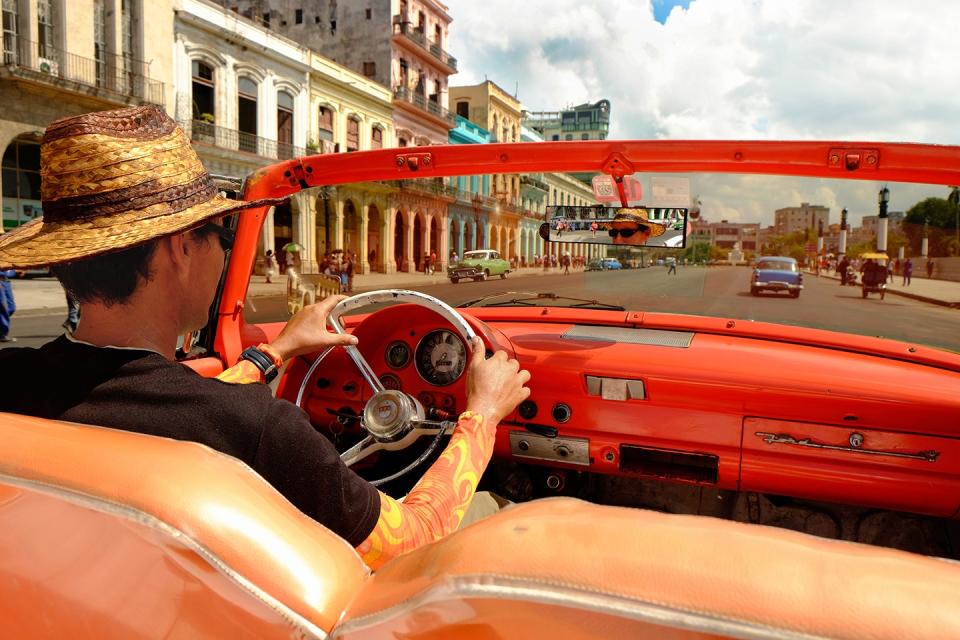
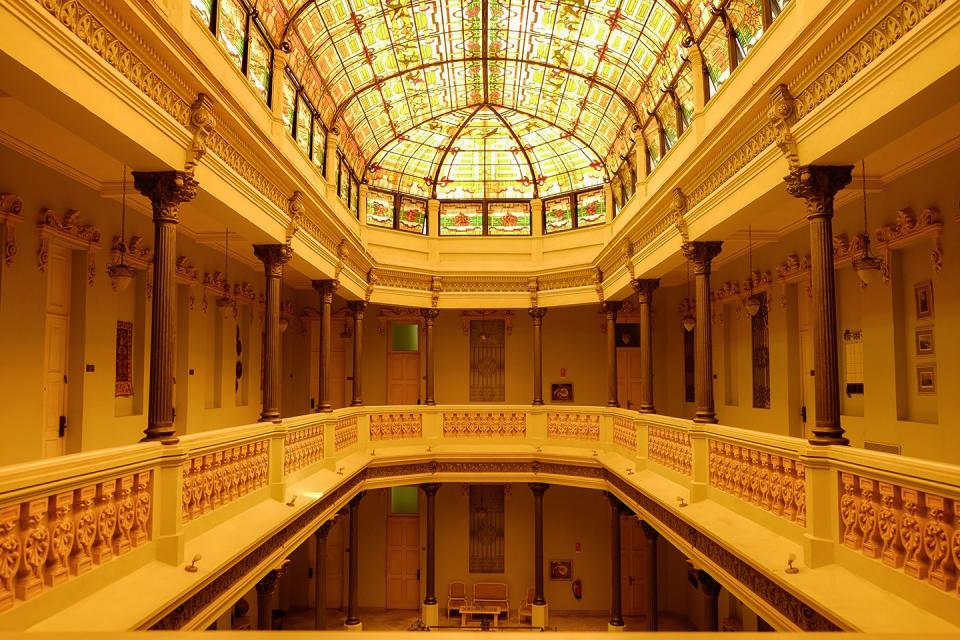
__STYLE: __Baroque façade, Art Nouveau interior, very Wes Anderson set. HERITAGE: Former textile warehouse converted, in 2003, to a hotel run by the Cuban government as a tribute to Hebrew culture’s influence on Cuban art. PRICE: From $81 per night. NAME DROP: Honeymooners and other romantics. __DO IT: __ Have a café con leche at Café El Escorial at 37 Plaza Vieja.
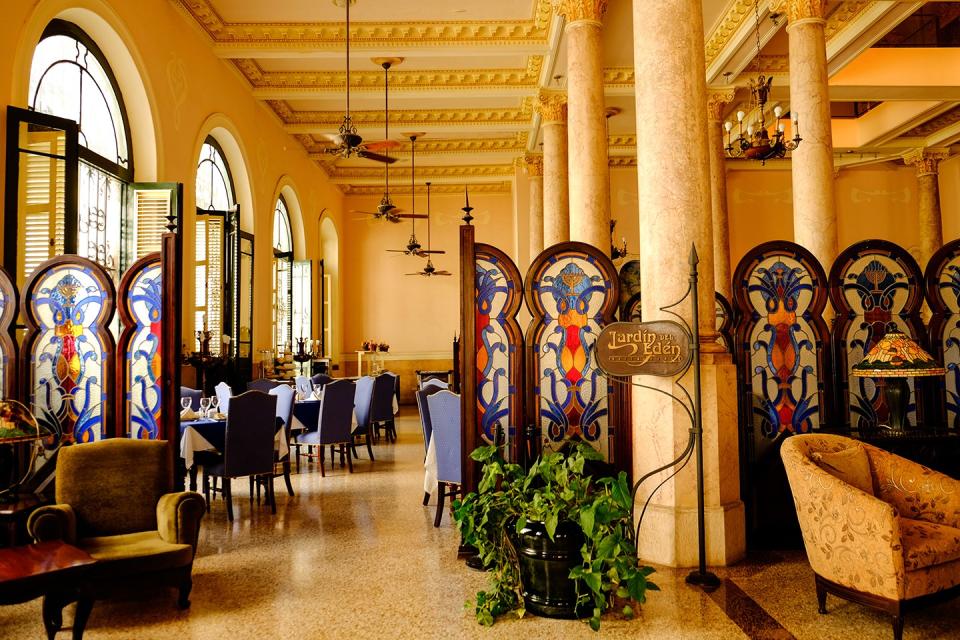
__STYLE: __Baroque façade, Art Nouveau interior, very Wes Anderson set. HERITAGE: Former textile warehouse converted, in 2003, to a hotel run by the Cuban government as a tribute to Hebrew culture’s influence on Cuban art. PRICE: From $81 per night. NAME DROP: Honeymooners and other romantics. __DO IT: __ Have a café con leche at Café El Escorial at 37 Plaza Vieja.
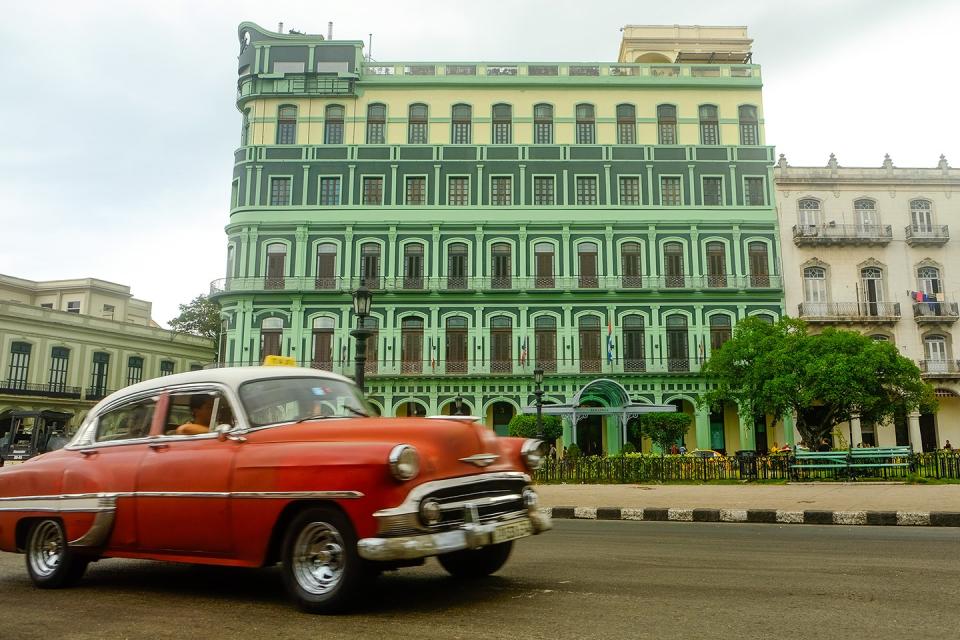
__STYLE: __ Neoclassical. __HERITAGE: __ Built in 1933, reopened in 2005. PRICE: From $179 per night. NAME DROP: Beyoncé and Jay Z, Jimmy Page. DO IT: Mojitos on the roof at sundown. Enjoy the air-conditioning.
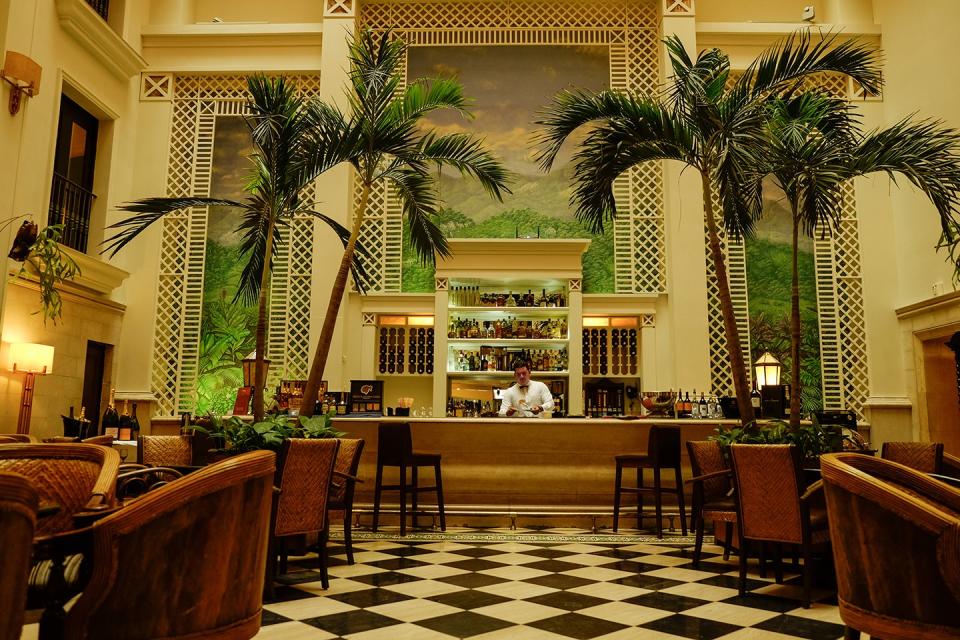
__STYLE: __ Neoclassical. __HERITAGE: __ Built in 1933, reopened in 2005. PRICE: From $179 per night. NAME DROP: Beyoncé and Jay Z, Jimmy Page. DO IT: Mojitos on the roof at sundown. Enjoy the air-conditioning.
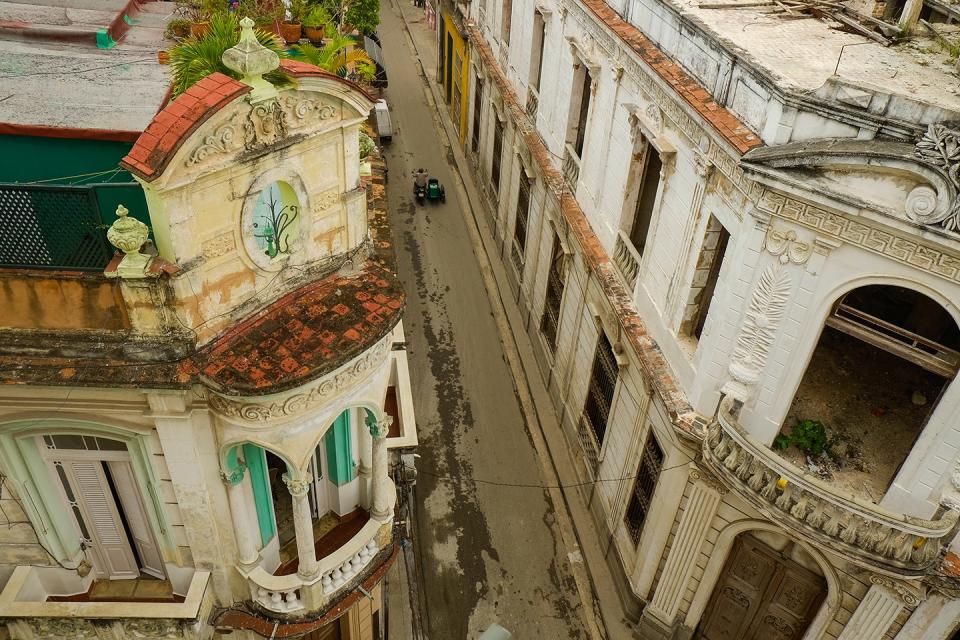
HOSTAL CHEZ NOUS (hostalcheznous@gmail.com)
STYLE: Colonial. HERITAGE: Proprietor Senor Gustavo Lerenzo Enamorado Zamora has run this lovely gem of a casa particular for 25 years. PRICE: $35 per night for a double room. NAME DROP: Likely your distant French or Russian cousins. Cat lovers. __DO IT: __ Book at table for dinner at 304 O’Reilly at Habana and Aguiar.
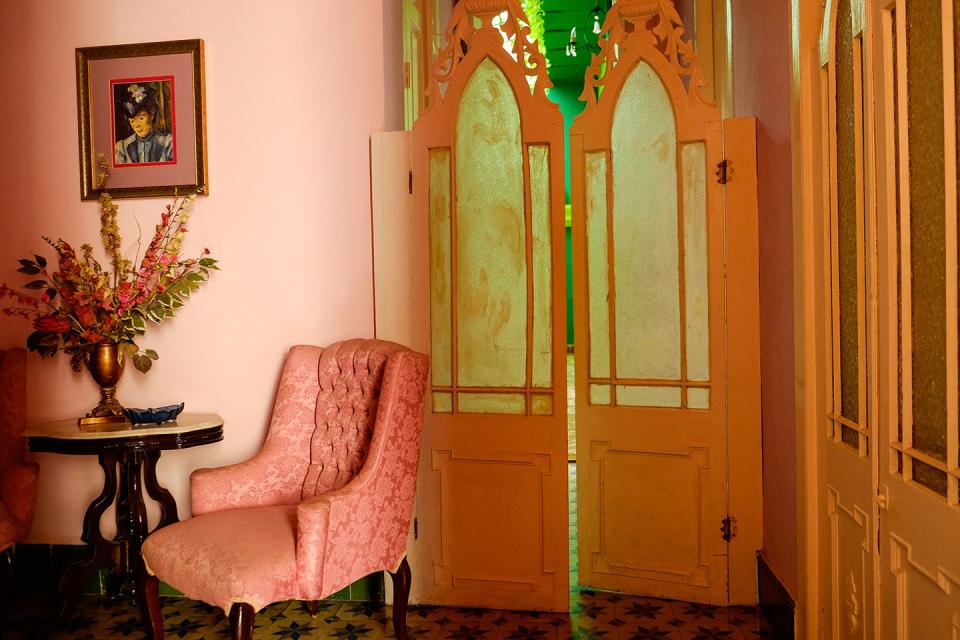
HOSTAL CHEZ NOUS (hostalcheznous@gmail.com)
STYLE: Colonial. HERITAGE: Proprietor Senor Gustavo Lerenzo Enamorado Zamora has run this lovely gem of a casa particular for 25 years. PRICE: $35 per night for a double room. NAME DROP: Likely your distant French or Russian cousins. Cat lovers. __DO IT: __ Book at table for dinner at 304 O’Reilly at Habana and Aguiar.
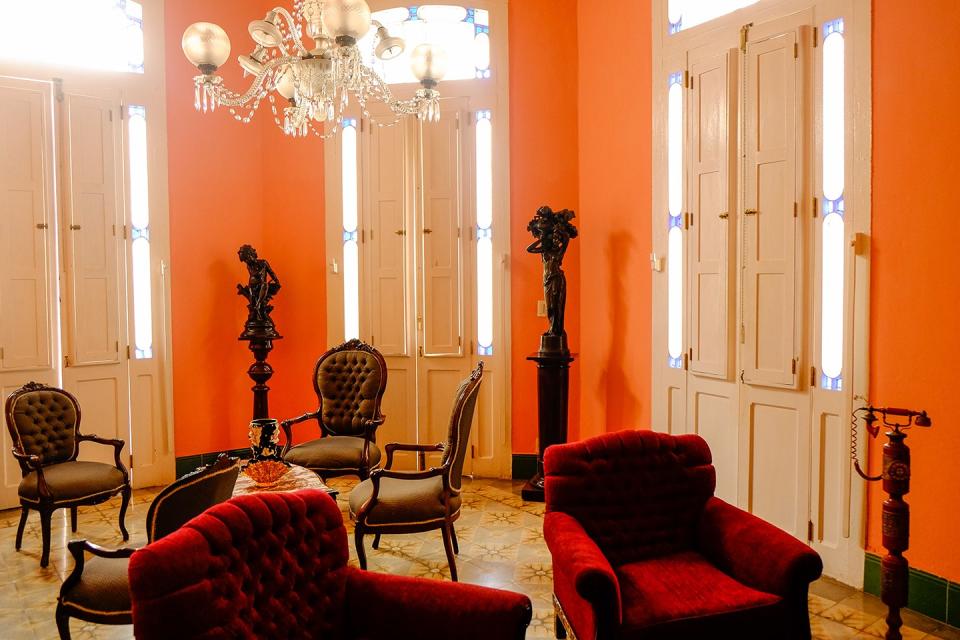
HOSTAL CHEZ NOUS (hostalcheznous@gmail.com)
STYLE: Colonial. HERITAGE: Proprietor Senor Gustavo Lerenzo Enamorado Zamora has run this lovely gem of a casa particular for 25 years. PRICE: $35 per night for a double room. NAME DROP: Likely your distant French or Russian cousins. Cat lovers. __DO IT: __ Book at table for dinner at 304 O’Reilly at Habana and Aguiar.
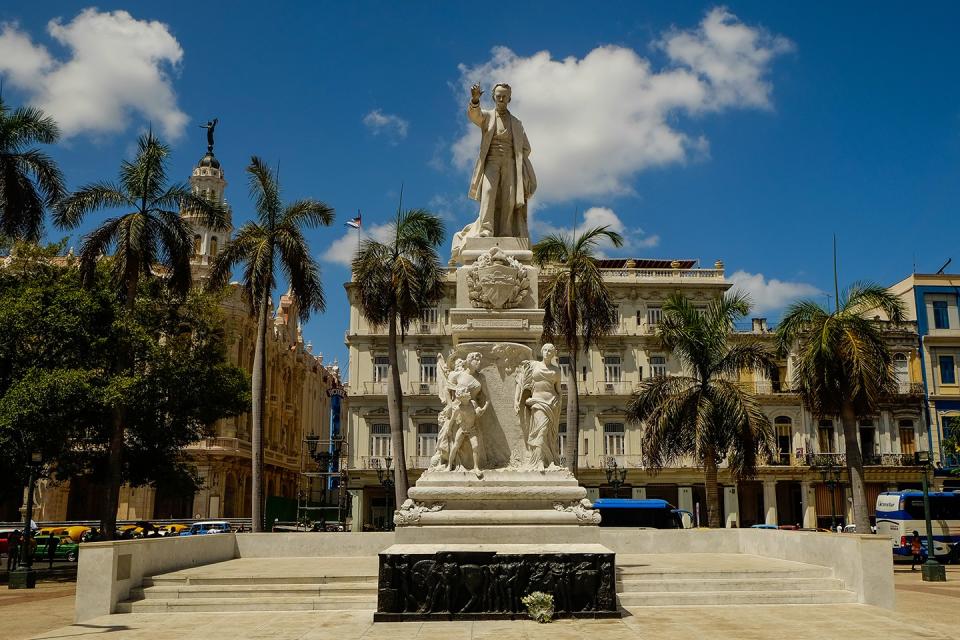
STYLE: Colonial, neoclassical. HERITAGE: Built in 1875. PRICE: From $97 per night. KEY FEATURES: Front porch Gran Café el Louvre for people watching. NAME DROP: Anna Pavlova, Sarah Bernhardt, José Martí. DO IT: Shuffle over to Hemingway’s hangout, El Floridita on Obispo, for a daiquiri; book a dinner reservation at La Guarida on Concordia.
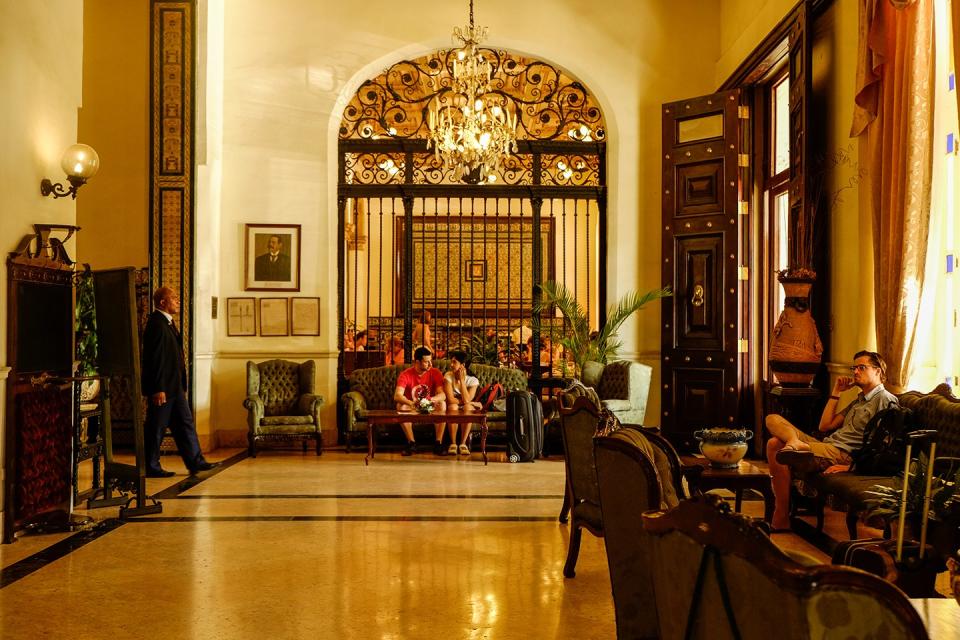
STYLE: Colonial, neoclassical. HERITAGE: Built in 1875. PRICE: From $97 per night. KEY FEATURES: Front porch Gran Café el Louvre for people watching. NAME DROP: Anna Pavlova, Sarah Bernhardt, José Martí. DO IT: Shuffle over to Hemingway’s hangout, El Floridita on Obispo, for a daiquiri; book a dinner reservation at La Guarida on Concordia.
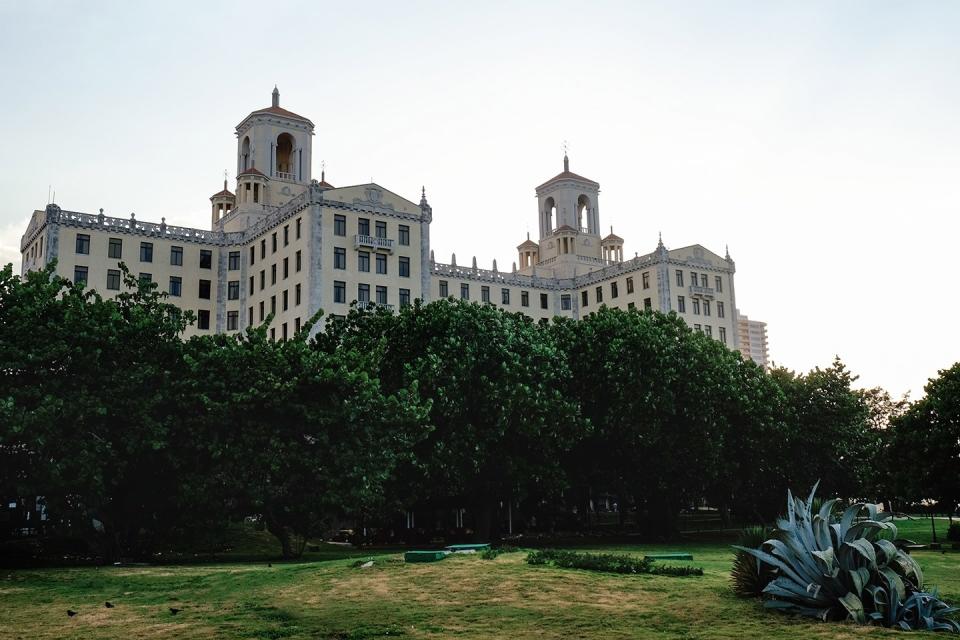
STYLE: Grand and eclectic mélange of Art Deco, Hispano-Moorish, with neoclassical details. HERITAGE: Built in 1930. PRICE: From $175 per night for a double. KEY FEATURES: Sweeping lawns on low cliffs above the Malecón. Garden terrace bar for people watching. NAME DROP: Frank Sinatra and Ava Gardner, Fred Astaire, Nat King Cole, Gary Cooper, and Errol Flynn (all have “historic rooms” commemorating their frequent visits). DO IT: Dance to the most fabulous Cuban beats at Bertolt Brecht on Calle 13.
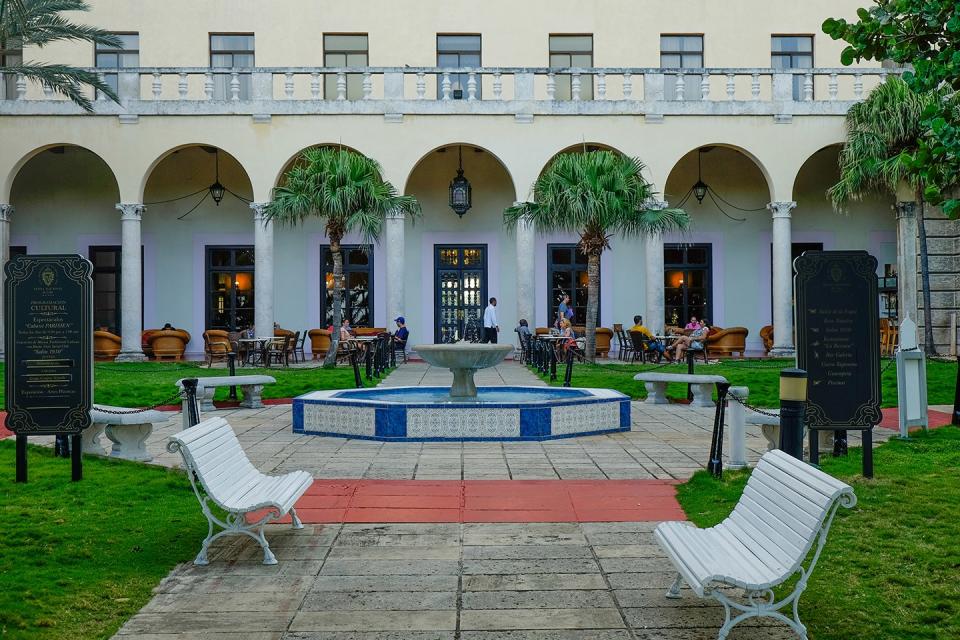
STYLE: Grand and eclectic mélange of Art Deco, Hispano-Moorish, with neoclassical details. HERITAGE: Built in 1930. PRICE: From $175 per night for a double. KEY FEATURES: Sweeping lawns on low cliffs above the Malecón. Garden terrace bar for people watching. NAME DROP: Frank Sinatra and Ava Gardner, Fred Astaire, Nat King Cole, Gary Cooper, and Errol Flynn (all have “historic rooms” commemorating their frequent visits). DO IT: Dance to the most fabulous Cuban beats at Bertolt Brecht on Calle 13.
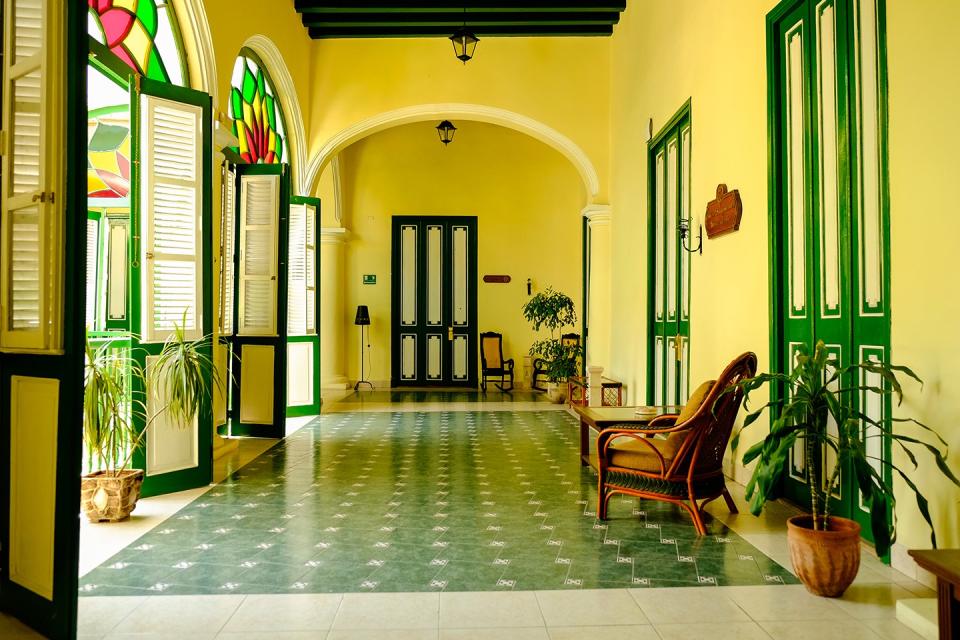
STYLE: Colonial. HERITAGE: 18th-century mansion, home to Count of Villanueva. NAME DROP: Cigar lovers, those who love them. Chickens and peacocks. KEY FEATURES: Cigar smoking encouraged, but not overwhelming. Each room named for a tobacco plantation. Casa Del Habano, the best cigar shop in Havana. DO IT: Light up a cigar in your room and relax.
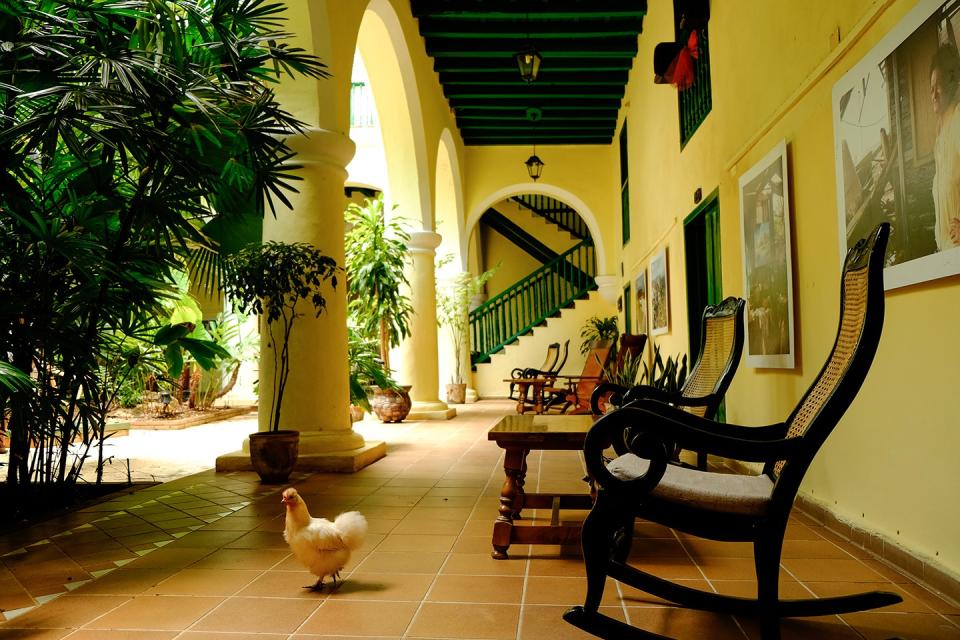
STYLE: Colonial. HERITAGE: 18th-century mansion, home to Count of Villanueva. NAME DROP: Cigar lovers, those who love them. Chickens and peacocks. KEY FEATURES: Cigar smoking encouraged, but not overwhelming. Each room named for a tobacco plantation. Casa Del Habano, the best cigar shop in Havana. DO IT: Light up a cigar in your room and relax.
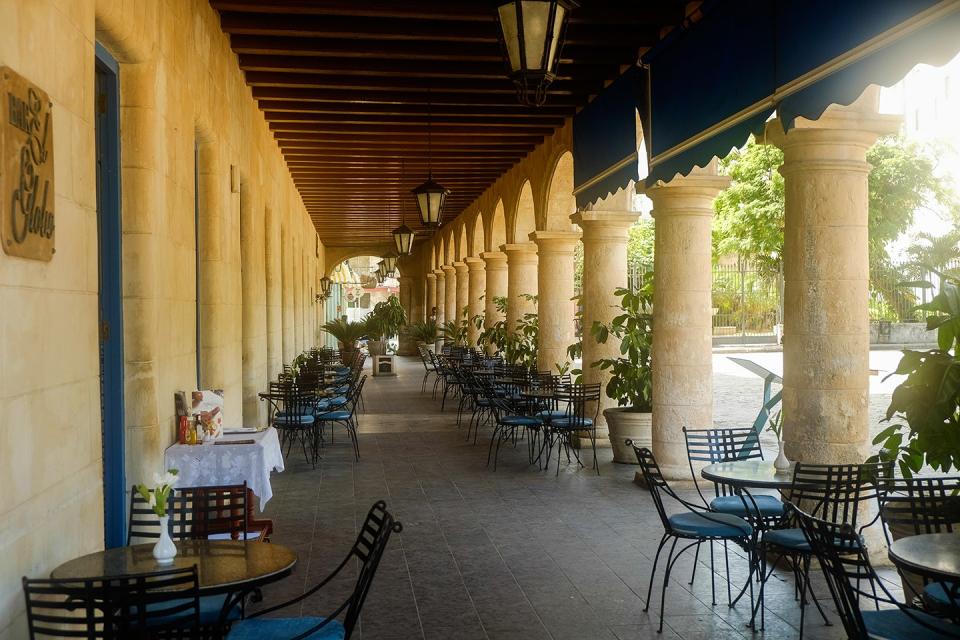
STYLE: Colonial. PRICE: From $119 per night. NAME DROP: Jack Nicholson, Sting, former president Jimmy Carter. KEY FEATURES: Pristine retreat from the hustle of Havana. Colonial furniture, crystal chandeliers. Charming, rooms with balconies overlooking the Plaza de Armas. DO IT: Stroll a few blocks on Obisbo to the dusty and packed Hotel Ambos Mundos for a look at the room where Hemingway wrote For Whom the Bell Tolls, about the Spanish Civil War, on your way to lunch at their rooftop café; order a Cubano sandwich.
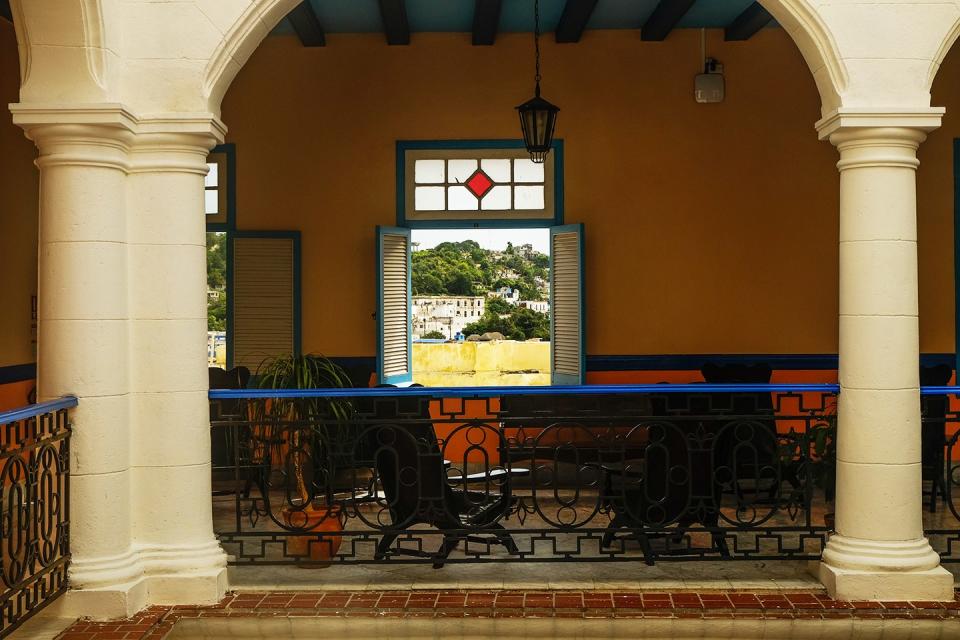
STYLE: Colonial. PRICE: From $119 per night. NAME DROP: Jack Nicholson, Sting, former president Jimmy Carter. KEY FEATURES: Pristine retreat from the hustle of Havana. Colonial furniture, crystal chandeliers. Charming, rooms with balconies overlooking the Plaza de Armas. DO IT: Stroll a few blocks on Obisbo to the dusty and packed Hotel Ambos Mundos for a look at the room where Hemingway wrote For Whom the Bell Tolls, about the Spanish Civil War, on your way to lunch at their rooftop café; order a Cubano sandwich.
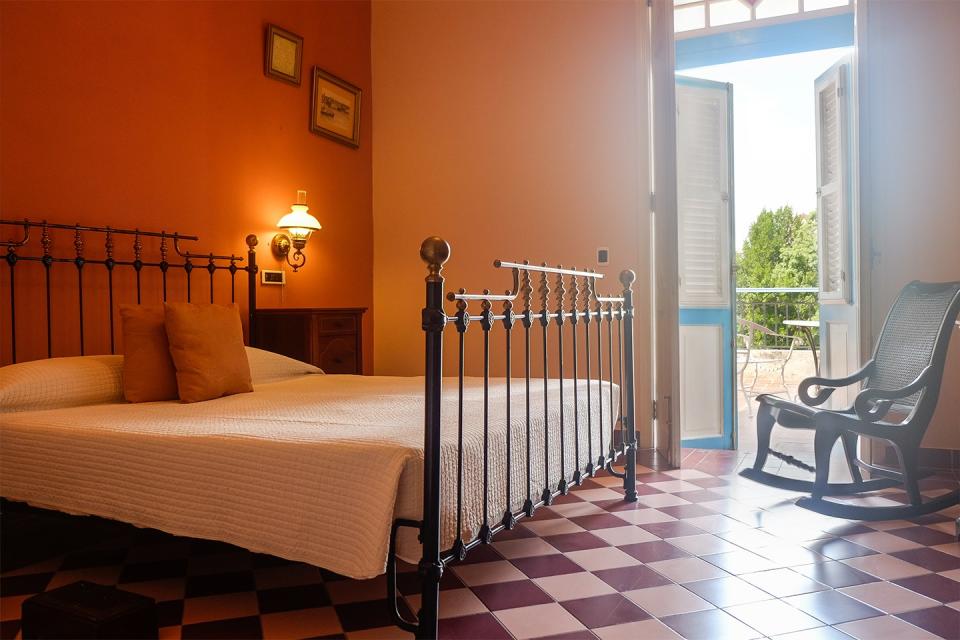
STYLE: Colonial. PRICE: From $119 per night. NAME DROP: Jack Nicholson, Sting, former president Jimmy Carter. KEY FEATURES: Pristine retreat from the hustle of Havana. Colonial furniture, crystal chandeliers. Charming, rooms with balconies overlooking the Plaza de Armas. DO IT: Stroll a few blocks on Obisbo to the dusty and packed Hotel Ambos Mundos for a look at the room where Hemingway wrote For Whom the Bell Tolls, about the Spanish Civil War, on your way to lunch at their rooftop café; order a Cubano sandwich.
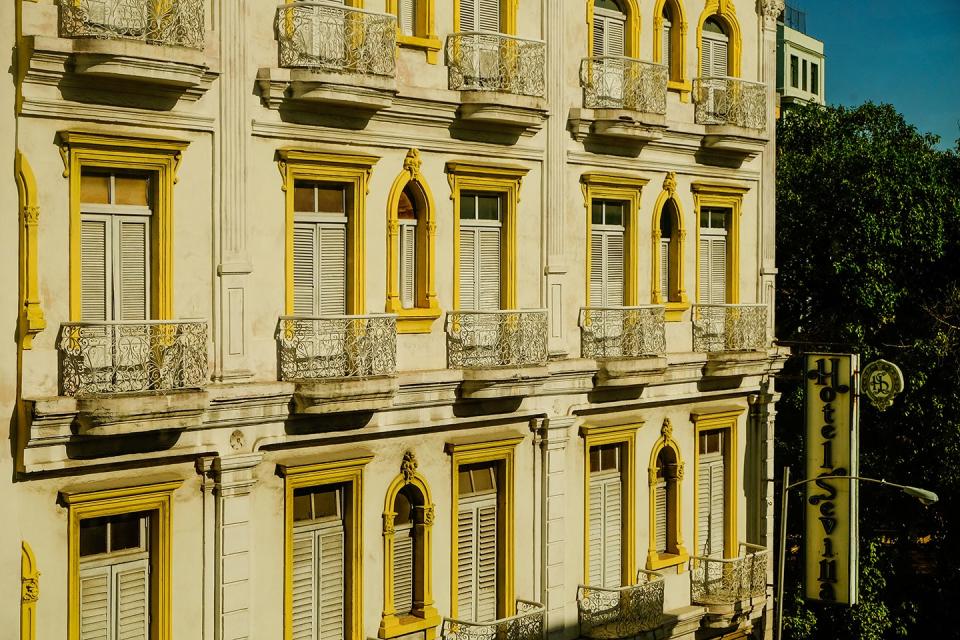
STYLE: Moorish. HERITAGE: Opened 1908, featured in Graham Greene’s novel Our Man in Havana, 1958. PRICE: From $96 per night. NAME DROP: Al Capone, Josephine Baker. KEY FEATURES: Location makes it a very convenient yet private enclave to return to after a day exploring Havana. The courtyard features live music played by local quartets. DO IT: Museum of Cuban Art in one direction and Sloppy Joe’s, a favorite watering hole of Hemingway’s, is in the other.
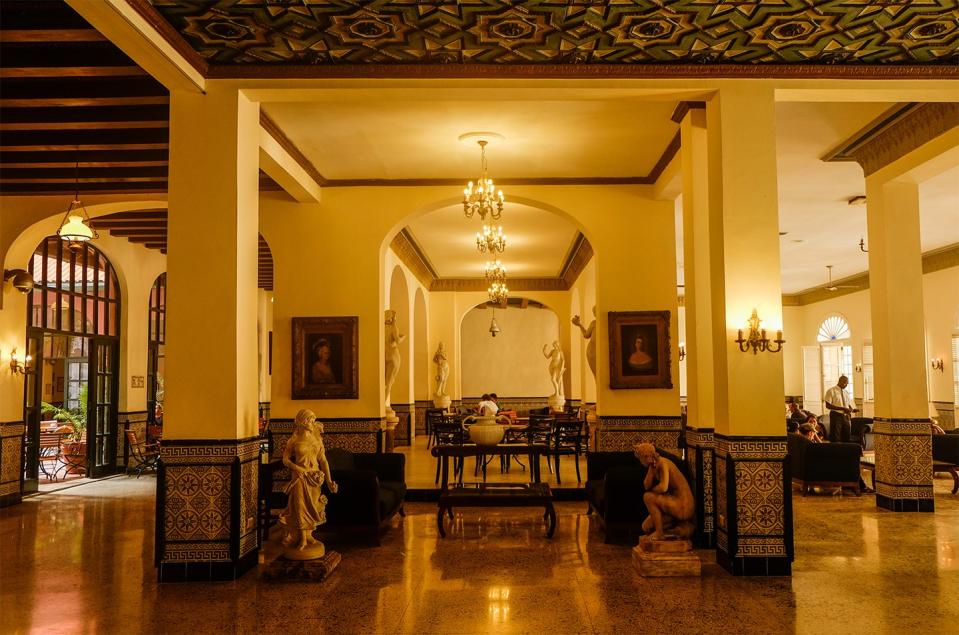
STYLE: Moorish. HERITAGE: Opened 1908, featured in Graham Greene’s novel Our Man in Havana, 1958. PRICE: From $96 per night. NAME DROP: Al Capone, Josephine Baker. KEY FEATURES: Location makes it a very convenient yet private enclave to return to after a day exploring Havana. The courtyard features live music played by local quartets. DO IT: Museum of Cuban Art in one direction and Sloppy Joe’s, a favorite watering hole of Hemingway’s, is in the other.
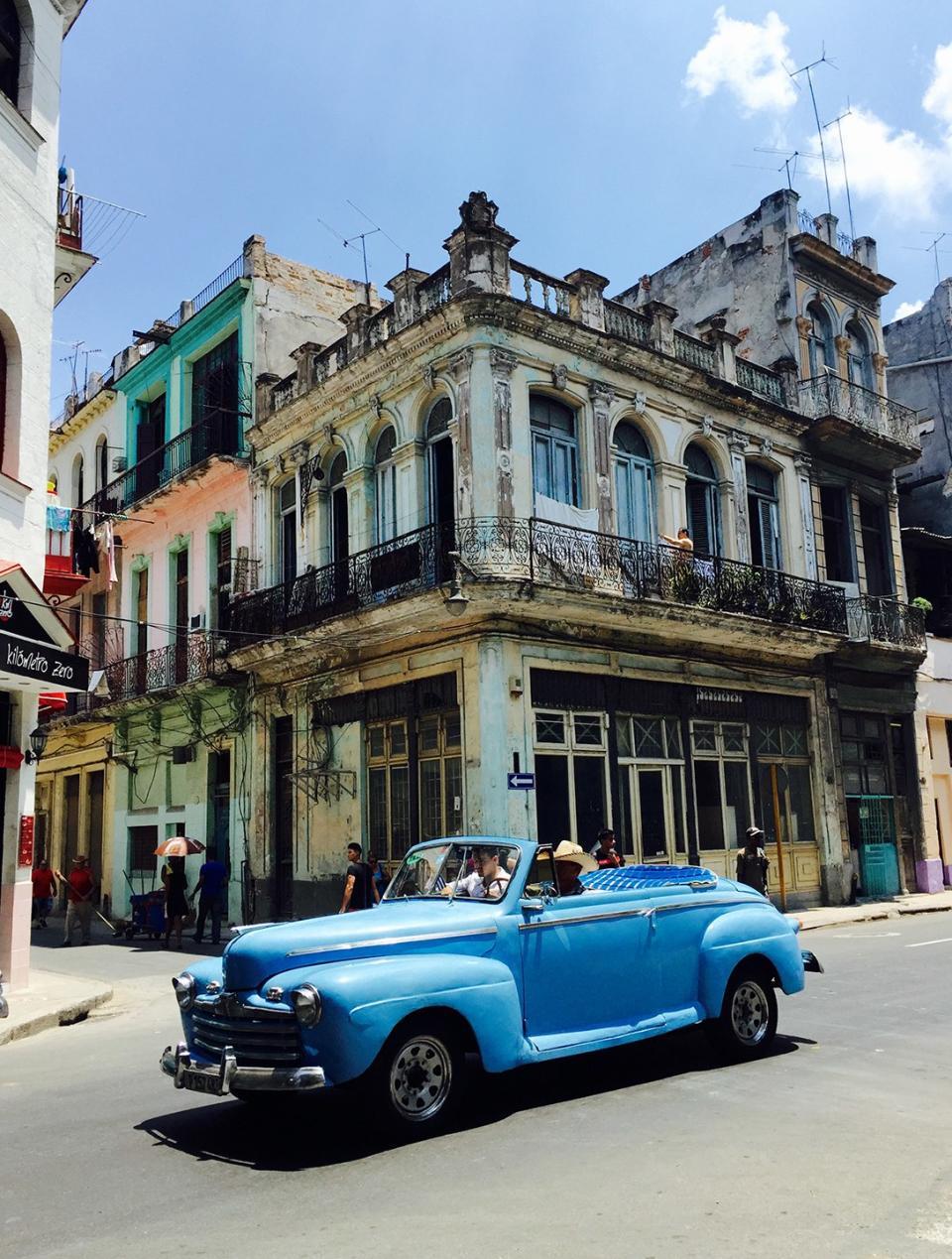
CRUISING OLD HAVANA
In a 1947 vintage convertible that would make my granddad in the States proud. I like to think of Havana’s boteros (private taxi drivers) as the gondoliers of Havana. Like all the Cubans I met in my 10 days there, boteros are genuinely friendly, warm, and more than happy to show you the hot spots of Havana and beyond.
